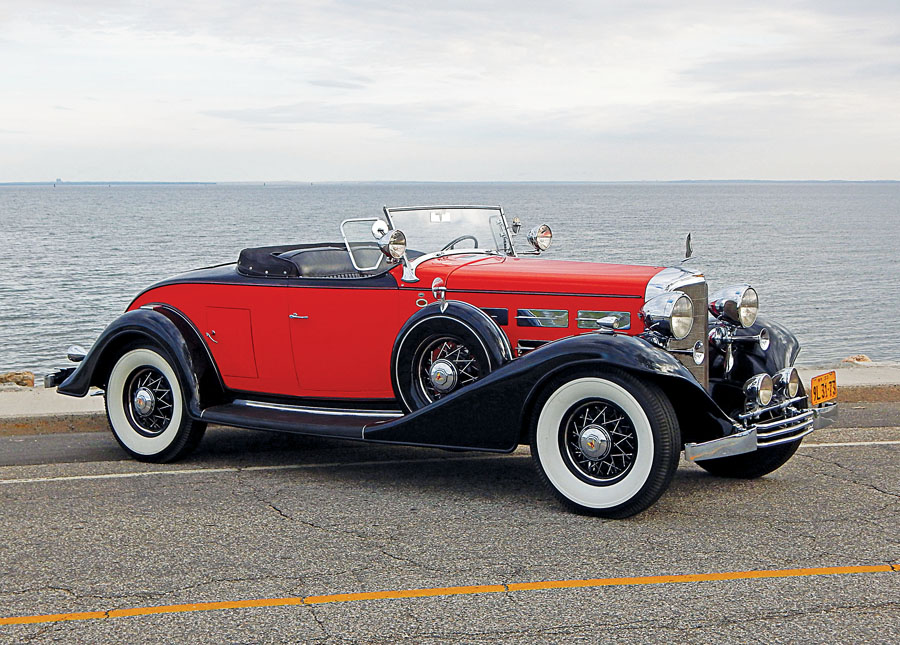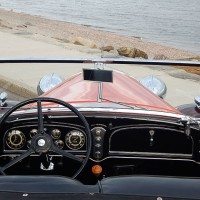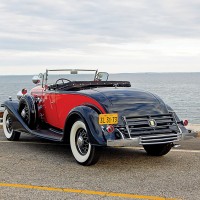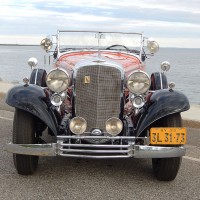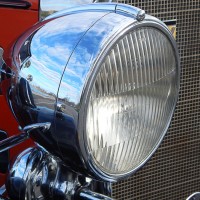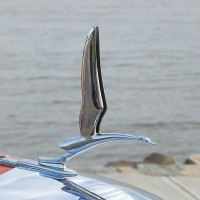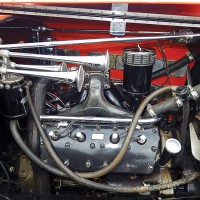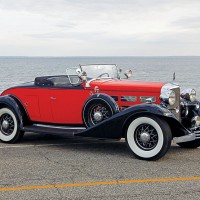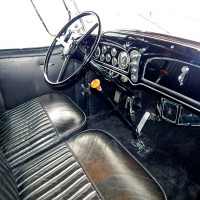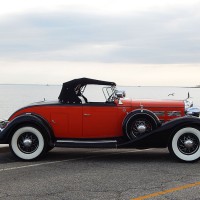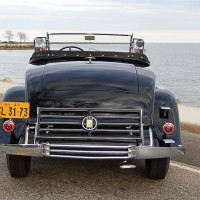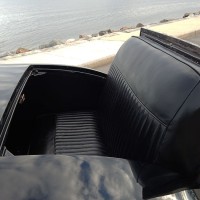SCM Analysis
Detailing
| Vehicle: | 1933 Cadillac Series 355 Roadster |
| Years Produced: | 1933 |
| Number Produced: | Three |
| Original List Price: | $2,795 |
| SCM Valuation: | $70,000–$135,000 |
| Tune Up Cost: | $300 |
| Distributor Caps: | $75 |
| Engine Number Location: | Right side of crankcase near water inlet |
| Club Info: | Classic Car Club of America |
| Website: | http://classiccarclub.org |
| Alternatives: | 1933 Packard Roadster, 1933 Pierce-Arrow Roadster, 1936 Cord 810 |
| Investment Grade: | B |
This car, Lot 132, sold for $324,500, including buyer’s premium, at the Dragone Greenwich Car Event Weekend Auction held in Westport, CT, on May 30, 2015.
The 1930s ushered in the “Golden Age” of the American automobile, as the manufacturers that catered to the upper crust refined their prestigious offerings. Gone was the boxy, ungainly styling of the ’20s, as coachbuilders and manufacturers offered bold motorcars with flowing, elegant lines, and engineers developed smooth and powerful motors that provided their clients with a luxurious motoring experience.
Cadillac stunned the automotive industry when, at the New York Auto Show on January 4, 1930, they introduced the revolutionary V16 engine that had been developed in relative secrecy. It was an astonishing success, with 2,886 cars sold in the initial year of production. Later, in October, they were firmly positioned as the leader of the luxury motorcar market with the introduction of the V12, which was a truncated version of the V16.
The end of the massive engines
The country was, however, sinking further into the dark cloud of the Great Depression, and those who were fortunate enough to escape its dire financial consequences were reluctant to flaunt their good fortune by driving a custom motorcar that cost 15 times as much as a basic Chevrolet.
The respected names of Marmon, Stutz, Duesenberg and Pierce-Arrow among others were able to hold on for a few more years, but the end was near and inevitable.
Cadillac would have most likely joined them — if not for the General Motors financial umbrella and the golden halo that the prestigious marque cast over GM’s other product offerings. The initial success of Cadillac’s V16 and V12 custom motorcars was, however, short lived.
In 1933, Cadillac planned on producing 400 V16s, but only 126 left dealer showrooms. While the custom, big-engined cars may have brought clients to the showroom, it was the bread-and-butter Cadillac V8 they drove home.
V8 cars hit hard — but motored on
Sales for the V8 also took a big hit during the economic malaise blanketing the country. In 1930, 11,005 V8 Cadillacs were sold, but in 1933 only 2,100 found new owners. Cadillac offered a wide range of V8 offerings on both 134-inch and 140-inch wheelbases, and Fisher offered 10 body styles while Fleetwood offered 17. Both body builders were part of General Motors.
The stylish, Fisher-bodied rumble-seat V8 roadster was priced at $2,795, well above the $445 starting price of a Chevrolet but also well below the $7,000–$8,000 price tag of a custom V16.
Cadillac V8 cars featured the wind-splitting V-shaped grille and were identified with three bars in the center of the bumper. The headlights and parking lights were oblong, and the grille could be finished with chrome or painted body color. The cars were fitted with chrome wire wheels, but they could also be ordered with full discs to avoid the chore of cleaning the spokes. They were attractive, stylish automobiles indeed.
The sole survivor
Our subject Cadillac Series 355 roadster sold by Dragone at their Greenwich event was one of only three produced and the only remaining example. It wore an older — but well-maintained — restoration, was a number of years away from being thought of as fresh, and could not be rated much higher than “3.”
Its sale, at a price that a few years ago would have bought an open V16, is a reflection on the strength of the Full Classic market. Some say we aspire to the cars of our youth, but that would place the buyers of a 1930s Full Classic well past the century mark, so I have to question that logic.
Instead, I believe it’s more accurate to state that today’s buyers are appreciating the elegance and drivability of the earlier cars, and as more avenues open for their use, their values continues to escalate. That said, the price paid here for a Cadillac V8 a bit past its prime may just fall under the old axiom: “You didn’t pay too much, you just bought too soon.” ♦
(Introductory description courtesy of Dragone Auctions.)
